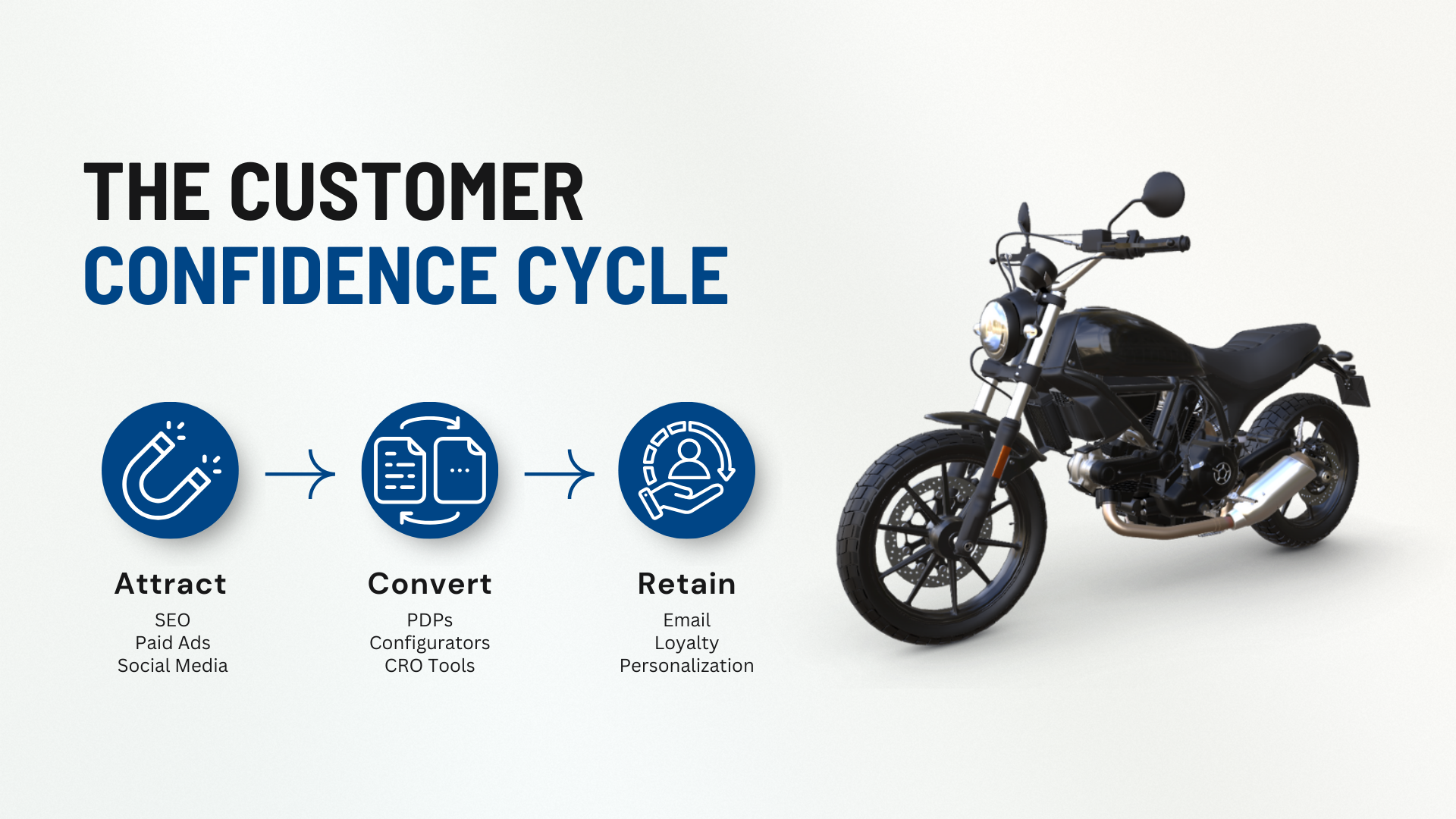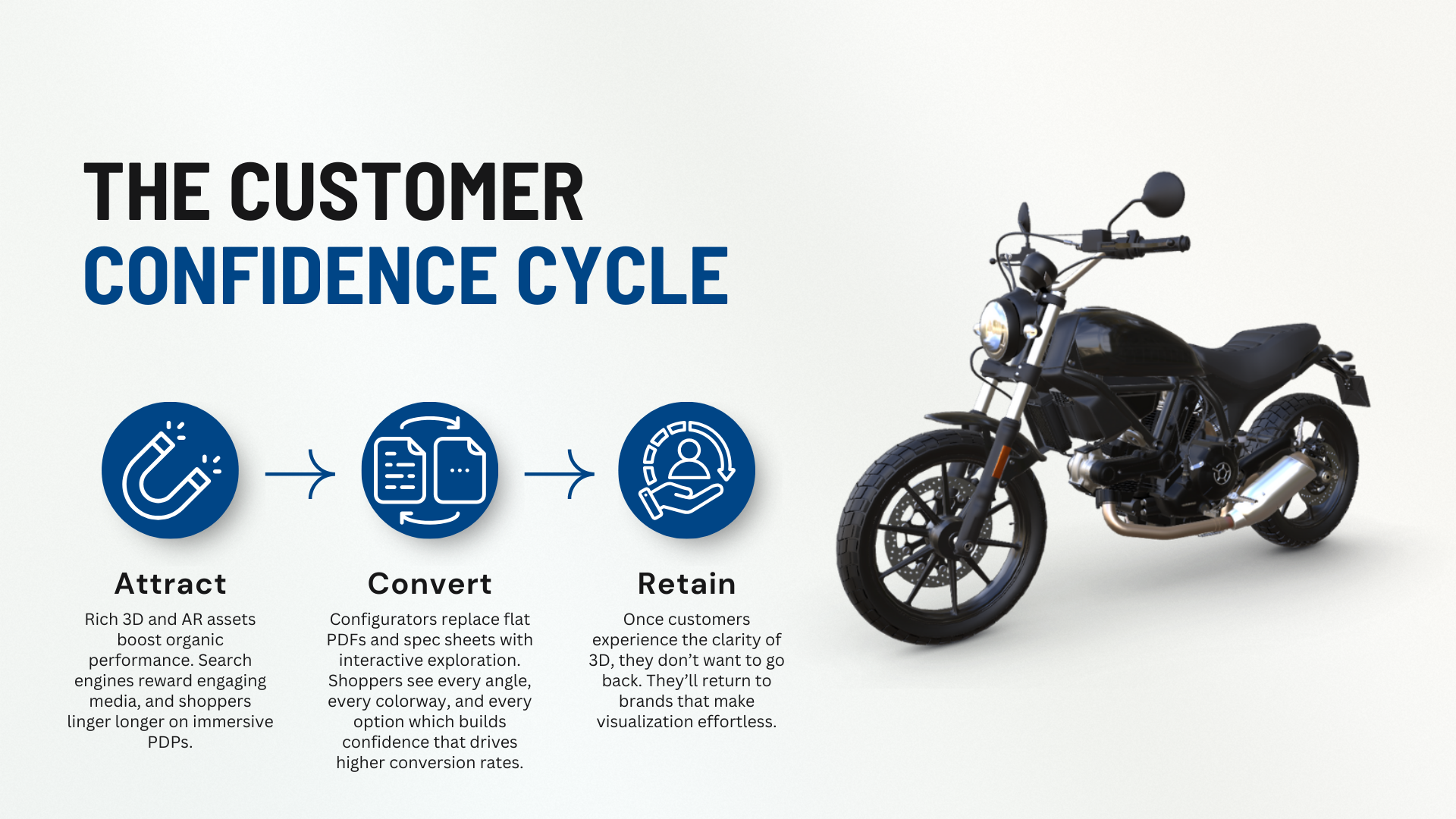Ecommerce Tech Stacks: No Longer Just Checkout & CMS
For years, ecommerce teams measured their stack’s strength by how fast pages loaded, how smooth checkout felt, or which CMS offered the slickest integrations. But in 2025, the bar has shifted. Your customers expect more than speed, they expect confidence. They want to know exactly what they’re getting.
That shift is forcing digital and marketing leaders to rethink their stacks. And one category is breaking through as must-have instead of nice-to-have: 3D visualization software tools.
Why 3D Belongs in the Ecommerce Stack
Think about the core functions of your ecommerce stack today:

3D fits squarely into the convert bucket, but its ripple effect touches every layer.

It’s no longer just about having a modern-looking site. It’s about embedding 3D where it matters most, within your buyer’s decision-making process.
Who Owns the Stack (and Why 3D Lands on Their Plate)
If you’re wondering who should be championing 3D in your organization, look at the usual suspects:
- Digital Transformation Leads see 3D as a strategic investment, one that modernizes the brand’s entire go-to-market motion.
- Ecommerce Managers view it as a tool to optimize PDPs and boost conversions.
- Marketing Teams know immersive content outperforms static visuals across campaigns.
In other words, if you own or influence the ecommerce stack, 3D is already knocking on your door.
Timing Matters: Budget Season Is Here
Every fall, brand leaders dust off their budget spreadsheets and start lobbying for next year’s tech investments. Historically, that’s when the “extras” get squeezed. But this season, 3D has moved out of the “experimental” column.
Why? Because brands are watching competitors roll out immersive configurators that let consumers build their dream product online. Dealers love it because it simplifies sales conversations. Shoppers love it because it makes customization real. And leadership loves it because it drives measurable ROI.
Translation: if you wait another budget cycle to bring in 3D, you risk being the brand that feels behind in 2026.
Evaluating 3D Visualization Software Tools
Not all 3D tools are created equal. When evaluating where 3D fits in your stack, keep these questions front and center:
- Integration: Does it plug into your existing ecommerce platform (Shopify, BigCommerce, Shopware, Adobe Commerce)?
- Performance: Can it handle heavy product files without slowing down your site?
- Configurability: Does it let shoppers explore custom builds, or just spin a static model?
- Scalability: Will it grow with your product catalog, or force you into endless rework?
- Analytics: Does it generate insights into how shoppers interact with your products (which options they try, which ones convert)?
The best 3D visualization software tools slot seamlessly into your broader strategy, turning digital twins into conversion engines.
Where 3D Fits Next
The ecommerce stack will keep evolving. AI, automation, personalization are all reshaping the buyer journey. But 3D is foundational. Without it, your stack is like a puzzle missing the centerpiece: the product experience itself.
The smartest brands aren’t asking if 3D belongs in their stack. They’re asking how fast they can roll it out, and how to get ahead of competitors who are still debating.
Ready to See It in Action?
Your customers don’t need another spec sheet. They need confidence. Dopple helps brands bring products to life with immersive 3D and AR tools fitting neatly into your ecommerce stack.